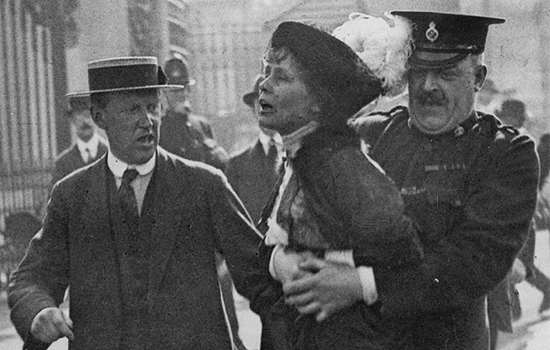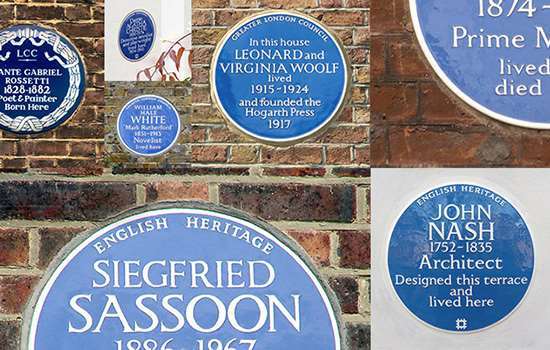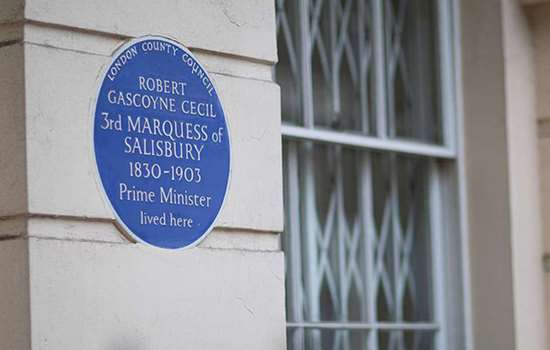Arber, Agnes (1879-1960)
Plaque erected in 2018 by English Heritage at 9 Elsworthy Terrace, Primrose Hill, London, NW3 3DR, London Borough of Camden
All images © English Heritage
Profession
Botanist
Category
Science
Inscription
AGNES ARBER nee Robertson 1879-1960 Botanist lived here 1890-1909
Material
Ceramic
The botanist Agnes Arber was a leading authority in her field. Her research spanned the disciplines of science, history and philosophy, and she became only the third woman to be elected a Fellow of the Royal Society. She is commemorated with a blue plaque at her former family home at 9 Elsworthy Terrace in Primrose Hill.
STUDENT DAYS: LONDN AND CAMBRIDGE
Agnes Arber lived with her family at 9 Elsworthy Terrace between the ages of 11 and 30. During this time she began the studies that set her on the course to become one of the world’s most respected botanists. She demonstrated her talent for botany at Frances Buss’s progressive North London Collegiate School for Girls and went on to study natural sciences at University College London from 1897 to 1899.
While at university she was also in contact with the plant anatomist, Ethel Sargant, and stayed with her at her private laboratory in Reigate during summer vacations. After further studies at Newnham College, Cambridge, Arber worked as Sargant’s research assistant before returning to UCL to research and teach.
Agnes left UCL and Elsworthy Terrace in 1909 when she married Edward Arber. She joined her husband at Cambridge and won a research fellowship at Newnham College in 1912. The couple had a daughter, Muriel Agnes, but sadly Edward died in 1918 and Arber raised Muriel alone.
PIONEER FOR WOMEN IN SCIENCE
Arber published 8 books and over 90 scientific papers in her career. Her first and most read work, Herbals, Their Origin and Evolution, was published in 1912. After 1927 she worked largely alone, in the quiet of her laboratory in her Cambridge home. Her research ranged from scientific studies of plant anatomy to the philosophy of botany.
In 1921 she was appointed to the prestigious post of President of the botany section of the British Association for the Advancement of Science. However shortly after accepting this honour she was persuaded to tender her resignation on the grounds that some members would not welcome another female president following the appointment of Edith Saunders the previous year. Arber was again the preferred choice to become President in 1926, but declined the appointment.
In 1946 Arber became only the third woman, and the first female botanist, to be elected to the Fellowship of the prestigious scienctific academy, the Royal Society. In 1948 she became the first woman to be awarded the Linnean Medal. Arber died in 1960, three years after publishing her final book, the philosophical study The Manifold and the One.
Nearby Blue Plaques
More About Blue Plaques



